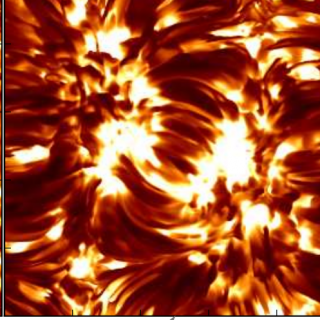Bibcode
Asensio Ramos, A.; de la Cruz Rodríguez, J.; Pastor Yabar, A.
Referencia bibliográfica
Astronomy and Astrophysics, Volume 620, id.A73, 16 pp.
Fecha de publicación:
12
2018
Revista
Número de citas
34
Número de citas referidas
32
Descripción
The quality of images of the Sun obtained from the ground are severely
limited by the perturbing effect of the Earth's turbulent atmosphere.
The post-facto correction of the images to compensate for the presence
of the atmosphere require the combination of high-order adaptive optics
techniques, fast measurements to freeze the turbulent atmosphere, and
very time-consuming blind deconvolution algorithms. Under mild seeing
conditions, blind deconvolution algorithms can produce images of
astonishing quality. They can be very competitive with those obtained
from space, with the huge advantage of the flexibility of the
instrumentation thanks to the direct access to the telescope. In this
contribution we make use of deep learning techniques to significantly
accelerate the blind deconvolution process and produce corrected images
at a peak rate of ˜100 images per second. We present two different
architectures that produce excellent image corrections with noise
suppression while maintaining the photometric properties of the images.
As a consequence, polarimetric signals can be obtained with standard
polarimetric modulation without any significant artifact. With the
expected improvements in computer hardware and algorithms, we anticipate
that on-site real-time correction of solar images will be possible in
the near future.
Proyectos relacionados

Magnestismo Solar y Estelar
Los campos magnéticos son uno de los ingredientes fundamentales en la formación de estrellas y su evolución. En el nacimiento de una estrella, los campos magnéticos llegan a frenar su rotación durante el colapso de la nube molecular, y en el fin de la vida de una estrella, el magnetismo puede ser clave en la forma en la que se pierden las capas
Tobías
Felipe García

Magnetismo, Polarización y Transferencia Radiativa en Astrofísica
Los campos magnéticos están presentes en todos los plasmas astrofísicos y controlan la mayor parte de la variabilidad que se observa en el Universo a escalas temporales intermedias. Se encuentran en estrellas, a lo largo de todo el diagrama de Hertzsprung-Russell, en galaxias, e incluso quizás en el medio intergaláctico. La polarización de la luz
Ernest
Alsina Ballester